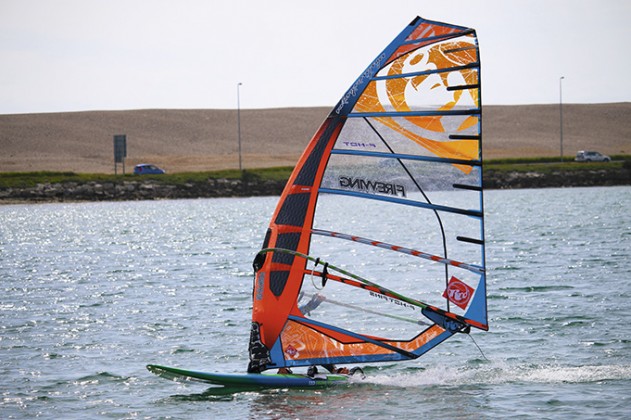
RRD FIREWING MKIII 7.8M 2015 TEST REVIEW
RRD FIREWING MKIII 7.8M 2015 TEST REVIEW
OVERVIEW
The only sail in our test with eight battens; the Firewing is RRD’s flagship sail, capable of being upgraded to a four-cam slalom thoroughbred with the introduction of the brand’s new Race Tuning System (RTS). Although only tested here in three-cam mode, it nevertheless has one of the deepest luff sleeves amongst this group and was best rigged using the method recommended by sail designer John Skye on the RRD rigging tips video (available on their website). Using a Firewing SDM C100 mast, the cams can be popped on before attaching the boom, providing you initially apply the correct downhaul tension. Once rigged, the Firewing has a good range of set, solely playing the tension on the downhaul to dramatically vary the depth of the draft and the extent of looseness in the leech. The outhaul is then fixed loosely itself, using the two clew eyelet options to alter the boom rake according to preference.
BRAND CLAIM
“Through constant testing of both the sails and the masts, we have been able to push the performance of the sail to new levels. Better stability, better acceleration and an even higher top end. However this has all been achieved without taking away anything from the easy to use feel of the sail. Whether it’s rigging the sail, gybing the sail, or working to get the last knot of speed from your gear, the Firewing takes your sailing to warp speed.”
PERFORMANCE
With such a pronounced luff sleeve and the additional batten, we were impressed with how balanced and manageable the Firewing felt at rest, and whilst not particularly pumpable due to the solid structure of its leading edge, the sail generates a useful amount of bottom end power thanks to the high centre of effort. The power delivery is crisp and efficient, the sail accelerating rapidly in the hands, and naturally adopting a locked-in powerful stance once at speed. With every gust the foil generates more acceleration and needs to be partnered with a freerace or slalom board that can keep up with it to avoid control issues. It has a definite leaning towards race/performance sailing – a big engine producing real horsepower that would be lapped up by the dedicated racer. As the conditions pick up, the Firewing’s power and handling can be played off against one another by adjusting the downhaul tension, fine-tuning the delivery by using the two clew eyelets. With solid unwavering stability, the power remains balanced yet still comes from high up in the draft and needs to be dominated with a purposeful stance. If done so, it rewards with a direct injection of energy in every gust, pushing the board to greater speeds. In transition, it wasn’t surprising that the Firewing was best suited to a committed style, the cams requiring a firm hand or pressure in the foil to rotate fully once on the new tack.
THE VERDICT
The Firewing is a true race engine, with enough handling ease and wind range to make it applicable to more than just the dedicated few.
Other sails in this test:

